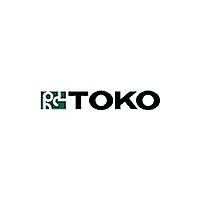TK11330BMCL TOKO, TK11330BMCL Datasheet - Page 26

TK11330BMCL
Manufacturer Part Number
TK11330BMCL
Description
VOLTAGE REGULATOR WITH ON/OFF SWITCH
Manufacturer
TOKO
13-2. Definition of term
The output voltage is specified with Vin=(Vout
and Iout=5mA.
The rated output current is specified under the condition
where the output voltage drops 0.9V times the value
specified with Iout=5mA. The input voltage is set to
Vout
temperature effect.
The dropout voltage is the difference between the input
voltage and the output voltage at which point the regulator
starts to fall out of regulation. Below this value, the output
voltage will fall as the input voltage is reduced. It is
dependent upon the load current and the junction
temperature.
Line regulation is the ability of the regulator to maintain a
constant output voltage as the input voltage changes. The
line regulation is specified as the input voltage is changed
from Vin=Vout
measurement to minimize temperature effect.
Load regulation is the ability of the regulator to maintain a
constant output voltage as the load current changes. It is a
pulsed measurement to minimize temperature effects with
the input voltage set to Vin=Vout
regulation is specified under an output current step
condition of 5mA to 100mA.
Ripple rejection is the ability of the regulator to attenuate
the ripple content of the input voltage at the output. It is
specified with 500mV
voltage, where Vin=Vout+2V. Ripple rejection is the ratio
of the ripple content of the output vs. input and is
expressed in dB.
Standby current is the current which flows into the
regulator when the output is turned off by the control
function (Vcont=Vin).
Standby Current (Istandby)
Dropout Voltage (Vdrop)
Line Regulation (LinReg)
Load Regulation (LoaReg)
Ripple Rejection (R.R)
Output Voltage (Vout)
Maximum Output Current (Iout MAX)
TYP
+1V and the current is pulsed to minimize
TYP
+1V to Vin=Vout
rms
, 1kHz super-imposed on the input
TYP
TYP
+6V. It is a pulse
+1V. The load
TYP
+1V)
GC3-I013B
The over current sensor protects the device when there is
excessive output current. It also protects the device if the
output is accidentally connected to ground. (When
external transistor is used, the protection operates at 10mA
at the base terminal)
The thermal sensor protects the device in case the junction
temperature exceeds the safe value (T
temperature rise can be caused by external heat, excessive
power dissipation caused by large input to output voltage
drops, or excessive output current. The regulator will shut
off when the temperature exceeds the safe value. As the
junction temperatures decrease, the regulator will begin to
operate again. Under sustained fault conditions, the
regulator output will oscillate as the device turns off then
resets. Damage may occur to the device under extreme
fault.
Please prevent the loss of the regulator when this
protection operates, by reducing the input voltage or
providing better heat efficiency.
Reverse voltage protection prevents damage due to the
output voltage being higher than the input voltage. This
fault condition can occur when the output capacitor
remains charged and the input is reduced to zero, or when
an external voltage higher than the input voltage is applied
to the output side
MM : 200pF 0 200V or more
HBM : 100pF 1.5k 2000V or more
* In the case that the power, Vin Ishort(Short Circuit Current),
Over Current Sensor
Thermal Sensor
Reverse Voltage Protection
ESD
becomes more than twice of the maximum rating of its power
dissipation in a moment, there is a possibility that the IC is
destroyed before internal thermal protection works.
TK113xxCM
J
=150 C). This
Page 26











